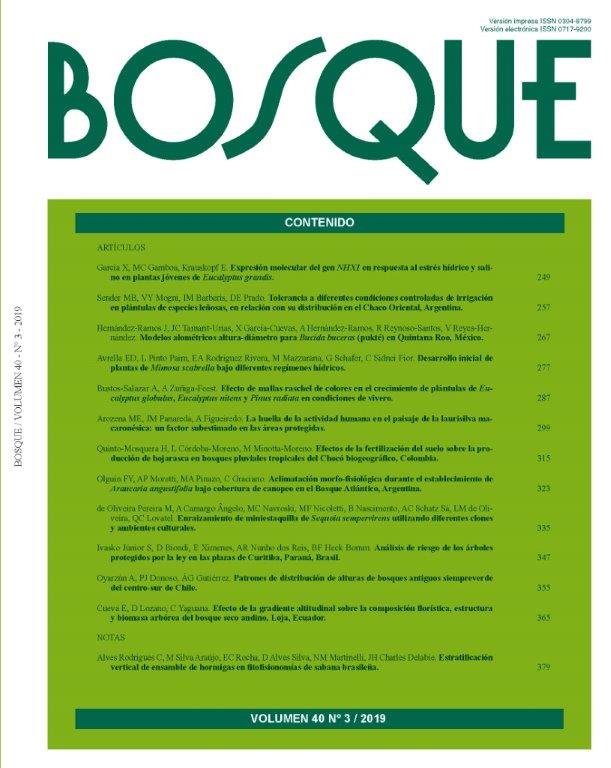Enraizamiento de miniestaquilla de Sequoia sempervirens utilizando diferentes clones y ambientes culturales
Contenido principal del artículo
Resumen
Sequoia sempervirens es un árbol longevo de rápido crecimiento con madera resistente a plagas. El objetivo de este estudio fue cuantificar la capacidad de enraizamiento adventicio de clones de S. sempervirens en dos ambientes, así como determinar el comportamiento de enraizamiento durante el período de evaluación. Se plantaron miniestaquillas de cinco clones cultivados en minihuertos clonales para enraizar en dos ambientes diferentes: mini túnel e invernadero de nebulización intermitente. Se realizaron evaluaciones semanales (de 30 a 93 días) de las variables: supervivencia (%), mini estaquillas enraizadas (%) y raíces emitidas. La velocidad de enraizamiento varió en relación con los clones, ocurriendo principalmente entre 50 y 60 días después de plantados, con la aparición de nuevas raíces entre 70 y 80 días. El ambiente de cultivo promovió respuestas distintas en el proceso de enraizamiento, siendo más temprano en el invernadero de nebulización intermitente, pero con un índice más alto en el mini túnel al final de la evaluación. El proceso de diferenciación de mini estaquillas ocurrió inicialmente con la formación de callos, alrededor de 15 días, seguido de enraizamiento (entre 30 y 60 días) y la posterior aparición de nuevas raíces. El enraizamiento de las mini estaquillas se puede hacer en un mini túnel, con buenos índices para todos los clones, y se recomienda mantener las mini estaquillas en este ambiente durante 90 días para una buena formación de raíces.

